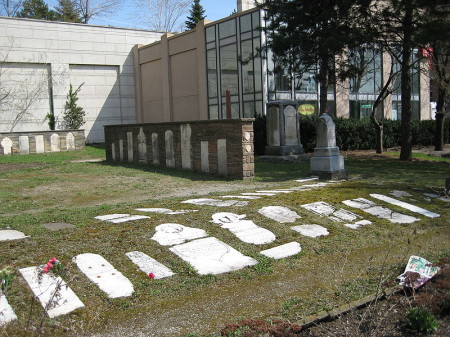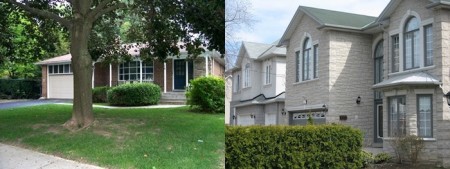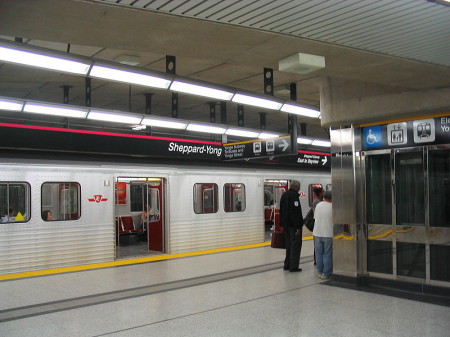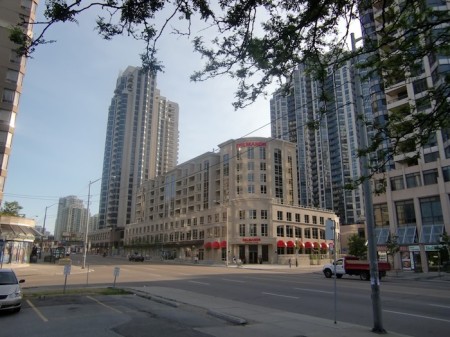Willowdale. Riverdale. Rosedale. Bracondale. Parkdale. Rexdale. Armadale. Bendale. Keelesdale. Bloordale. Erindale.
I was hanging out at the Pacific Hotel in Wiarton one rangy Halloween night, when one of the locals we were talking to mentioned that he had grown up in Willowdale. “Oh, that’s the part of Toronto that had a soap-opera named after it?” I said. No, that was Riverdale. “Or is that in Mississauga?” Still no. “Is that that Rexdale?” another non-Torontonian amongst us asked. No.
“Is it kinda grotty?” someone else chipped in? No, that was Parkdale. “Is it really fancy?” I asked. No, that was Rosedale. We gave up.
There are so many ‘ales’ in the Toronto area that I get mixed up. To be clear, Willowdale is the one at the north-central end of Toronto. For the purposes of this website, I’m going to define Willowdale as everything north of the 401 up to the border with York Region at Steeles.
(Oh wait, there is Maryvale. And Cedarvale. And Meadowvale. Ale. Ale. Ale. Hank Snow could do a whole song just using GTA neighbourhoods. )

Juxaposition of the old and new in Willowdale. Settler cemetery surrounded by glass and concrete. (Credit: Simon P, Wiki Commons.)
From carriages to condos
Lansing was the first community developed in this area of Yonge Street whilst Willowdale, if I am correct, was actually located a bit to the east. The first person to settle Willowdale was Joseph Cummer, the son of a Loyalist Germans from Pennsylvania. Another returnee from America, David Gibson, helped develop Willow Dale village after he was pardoned by the Upper Canada government for his role in the 1837 Rebellion. Gibson House still stands on Yonge Street to this day. It is a museum now.
 One of Toronto’s inner burbs, Willowdale was once a pretty sleepy bedroom community just north of the limits of the Old City. People moved to Willowdale because they didn’t want to live downtown, or in a semi-detached, and/or couldn’t afford Don Mills. Willowdale from 1950-1970 was your pretty standard family suburb: a bastion of single-family homes, relatively anglo-saxon with a smattering of Jews and Italians. David Clayton-Thomas and two-thirds of Rush are from Willowdale, as are comedians Howie Mandel and Gerry Dee. Dee, the son of Scottish immigrants, has a great bit on growing up in Willowdale next door to an Italian family. (I’m not normally into ethnic comedy. It is not terribly hard to mine stereotypes for worn-out laughs. But some comedians have the talent and analytical ability to poke fun at different groups in an inoffensive but still critical manner. Gerry Dee does this. That clip is great because it is funny yet respectful, and there is a subtle critique underlying its kernel of truth that is hard to miss.)
One of Toronto’s inner burbs, Willowdale was once a pretty sleepy bedroom community just north of the limits of the Old City. People moved to Willowdale because they didn’t want to live downtown, or in a semi-detached, and/or couldn’t afford Don Mills. Willowdale from 1950-1970 was your pretty standard family suburb: a bastion of single-family homes, relatively anglo-saxon with a smattering of Jews and Italians. David Clayton-Thomas and two-thirds of Rush are from Willowdale, as are comedians Howie Mandel and Gerry Dee. Dee, the son of Scottish immigrants, has a great bit on growing up in Willowdale next door to an Italian family. (I’m not normally into ethnic comedy. It is not terribly hard to mine stereotypes for worn-out laughs. But some comedians have the talent and analytical ability to poke fun at different groups in an inoffensive but still critical manner. Gerry Dee does this. That clip is great because it is funny yet respectful, and there is a subtle critique underlying its kernel of truth that is hard to miss.)
Today, Willowdale is drastically different. Yonge and Sheppard has boomed upwards. First came the institutional development – The Toronto District School Board and the City of North York built head offices there. Today, Mel Lastman Square (named by the former mayor after the former mayor) is home to a theatre, offices and a pile of public events. The plazas and strip malls of Yonge street have been replaced by condos north of the 401. The side-streets have not escaped unscathed; the old ranches, bungalows and sidesplits are being bought up for their large lots and replaced with massive infill homes covered in stucco and fake stone. Just east of Yonge on Leslie big box stores have gone in, like IKEA, Home Depot, and a massive Canadian Tire.

Rob Ford makes Mel Lastman look like a statesman. But who goes to Mel Lastman Square? Nooooooooooobody! (That’s not true, but I had to do it.)

Out goes brick veneer, in goes another floor and textured concrete veneer. (Credit: Simon P at Wiki Commons.)
Part of this change is due to changes in local governance. Like most Toronto neighbourhoods, Willowdale has been shunted around a bit between different municipal administrations. In 1922 it was incorporated into the Borough of North York, in 1953 North York was integrated into the Metro Toronto, in the 1970s North York became a city, and in 1998 North York ceased to exist thanks to the forced municipal amalgamation program pioneered by Premier Mike Harris. This has opened some communities to greater influence from central planning, and reduced the influence of to plan according to the wishes/needs of local residents.
The Stubway
But the biggest part of it is the subway. The TTC expanded to Sheppard and Finch in 1974. North York Centre was added in 1987. More stations were planned, but were never built. And then came the subway to suburbia. The line to nowhere. The stubway. Aka – the Sheppard Subway.
The Sheppard Subway line was one of four lines proposed by the government in 1995. When it fell, the Conservatives took over and cancelled all but Sheppard – which was strange, since it was the least useful of all the lines, but not-so-strange, given that the local area was Conservative-voting and Conservative-inclined North York mayor Mel Lastman was elected the first mayor of the megacity. The Sheppard Line was so unpopular that they even filled the existing tunnelling underway for the Eglinton line, because the Conservatives knew that the City would vote to continue building Eglinton if it wasn’t filled with rubble.
Today, Sheppard is the least used subway line in the city, with a lower ridership than some bus or streetcar routes, so much so that in 2008 there was a proposal made by the city to shut it down entirely. One can only imagine how different the city would have been if the Eglinton line had proceed instead of Sheppard. Hi-rise development has followed the subway all throughout Toronto, and the Sheppard line is no exception. Sure, house values went up as developers sought land for condos and residents sought subway-accessible lots to build megahouses, but driving a subway through a suburban neighbourhood has essentially fractured the nature of the area. The Leona Drive Project documents this. As one website puts it, Willowdale is uptown living at downtown prices.


